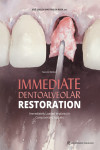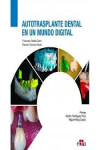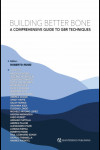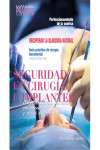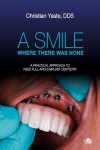SURGICAL CONCEPTS TO HANDLE ESTHETIC FAILURES IN IMPLANT PATIENTS - COMPENDIUM (5 DVD'S)
Daniel Buser
Datos técnicos
- ISBN 9788433029263
- Año Edición 2017
- Idioma Inglés
Sinopsis
Over the past 10 years, the frequency of esthetic failures has clearly increased in our department. Most of these failures are caused by poor treatment quality provided by incompetent dentists, resulting either in malpositioned implants or in a lack of a facial bone wall, or in a combination of both. This DVD Compendium presents the surgical concepts utilized at the University of Bern to treat these esthetic failures including the Reverse Torque Technique to easily remove osseointegrated implants without flap elevation, and to reestablish missing keratinized mucosa with full-thickness mucosal grafts. In addition, the videos show how these patients have been retreated with new implant therapy. A correct 3D implant position and local bone augmentation procedure using guided bone regeneration (GBR) are both important prerequisites for successful outcomes. This most important surgical technique for bone augmentation in implant patients is shown in detail utilizing locally harvested autogenous bone chips, combined with a xenogeneic low-substitution bone filler, and covered by a resorbable collagen membrane.
Índice
Volume 1: Implant removal technique in three patients Case description: The video shows how osseointegrated implants can be removed using the Reverse Torque Technique. With this low trauma technique - often with a flapless procedure - osseointegration is fractured at the bone-implant interface with special instruments, which are turned in counterclockwise direction. The technique is shown in 3 patients. In addition, such esthetic failures are often characterized by a lack of keratinized mucosa. To correct this soft tissue deficit, grafting with full-thickness mucosal grafts is presented in one patient simultaneously following implant removal. Volume 2: Failure of single tooth implant Case description: This single tooth implant has been in place for 18 years and needed to be removed due to a chronic infection and a slight mucosal recession. Implant removal resulted in a fracture of the small diameter implant. Thus, the small implant remnant was left in place to achieve an intact mucosa for the latter implant surgery. The open flap implant surgery included then first the implant removal using the Reverse Torque Technique and a direct re-implant placement with simultaneous Countour Augmentation using Guided Bone Regeneration (GBR). Volume 3: Esthetic failure of two adjacent implants including a lateral incisor area Case description: In this patient, two adjacent implants were in place for 14 years and developed a severe mucosal recession. The treatment included first the removal of the two osseointegrated implants, although then one of the small-diameter implants fractured in the apical part. Simultaneously, a full-thickness mucosal graft was used to reinstall keratinized mucosa. The subsequent implant surgery included the removal of the small implant remnant and implant placement in the canine position with simultaneous Guided Bone Regeneration (GBR). The implant prosthesis included a crown with a small mesial cantilever unit. Volume 4: Esthetic implant failure in a site with two missing central incisors Case description: This patient was referred with one osseointegrated implant in area 21 in a site with two missing centrals. The implant was heavily misangled and did not allow an esthetic restoration. Thus, the implant had to be removed, and the site was left to heal. Then, during an open flap procedure, two implants were inserted in a correct 3D position and angulation using a surgical stent. The minor facial bone defects were augmented with Guided Bone Regeneration (GBR) using autogenous bone chips, DBBM particles and a resorbable collagen membrane. Following healing, two single crowns will be used to complete the treatment. Volume 5: Esthetic disaster case with three implants and a severe mucosal recession Case description: This female patient had 3 osseointegrated implants supporting a fixed partial denture (FDP). All implants had severe mucosal recessions caused by a vertical bone defect at all implants. First, all implants were removed combined with mucosal grafting to reestablish keratinized mucosa. Later, 2 implants were inserted with a simultaneous horizontal bone augmentation using Guided Bone Regeneration (GBR). Following healing, a provisional FDP was fabricated with pink acrylic to compensate for the vertical soft tissue defect.
Otros libros que te pueden interesar
- ¿Quiénes somos?
- Gastos de envío
- Política de privacidad
- Políticas de devolución y anulación
- Condiciones Generales de contratación
- Contacto
2025 © Vuestros Libros Siglo XXI | Desarrollo Web Factor Ideas






